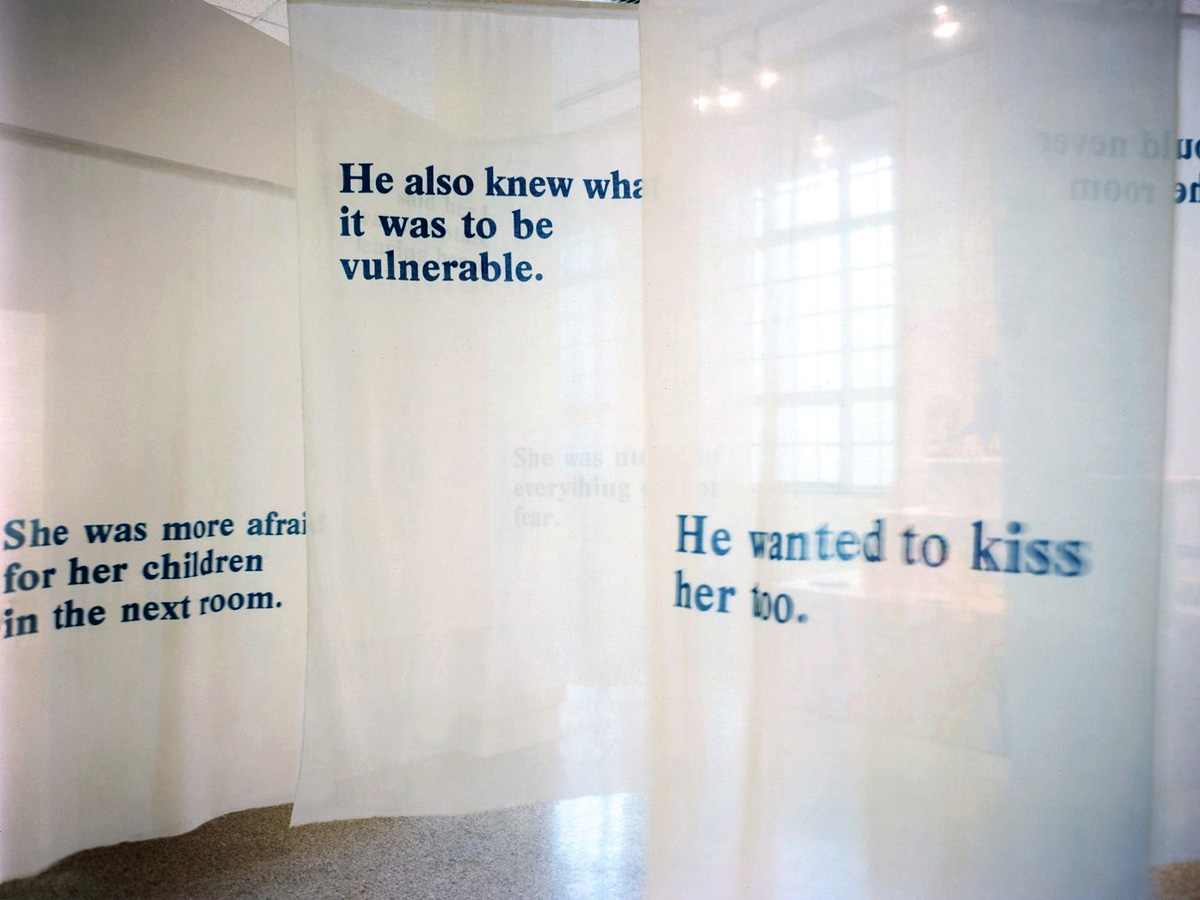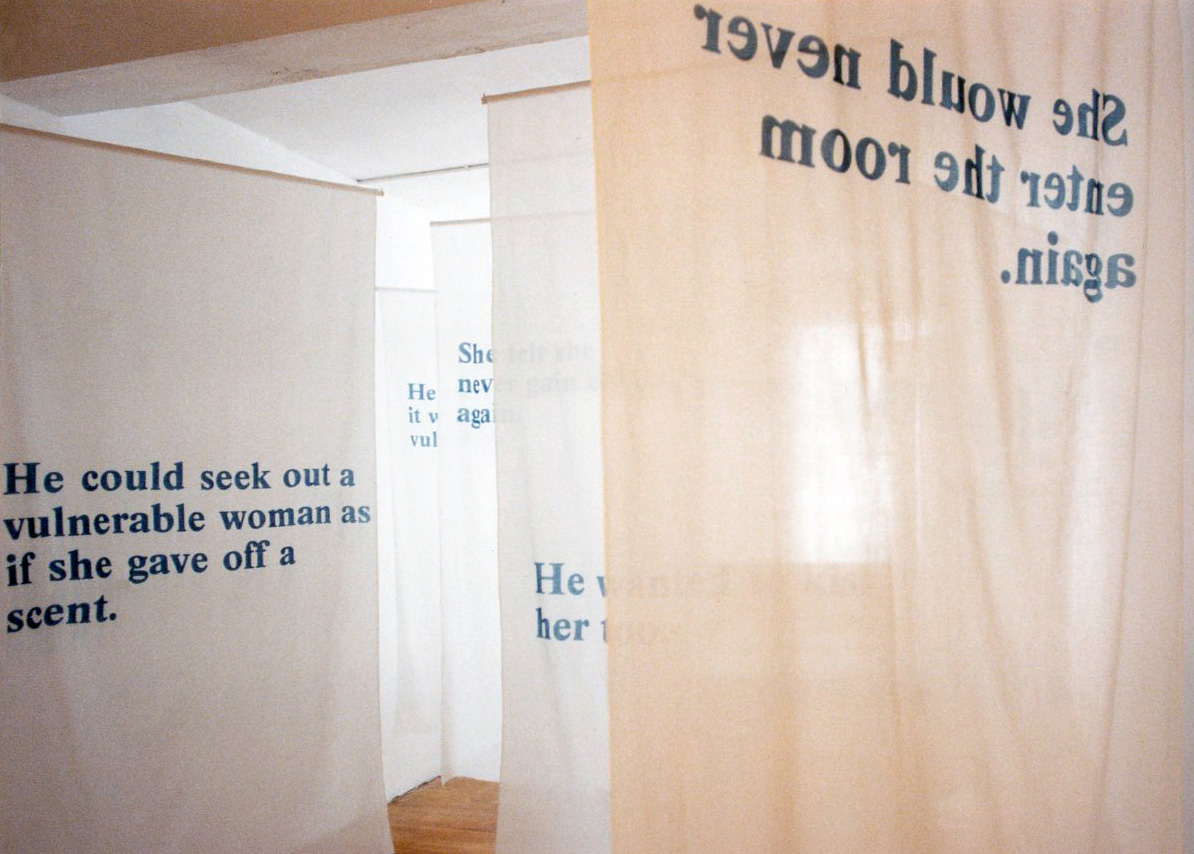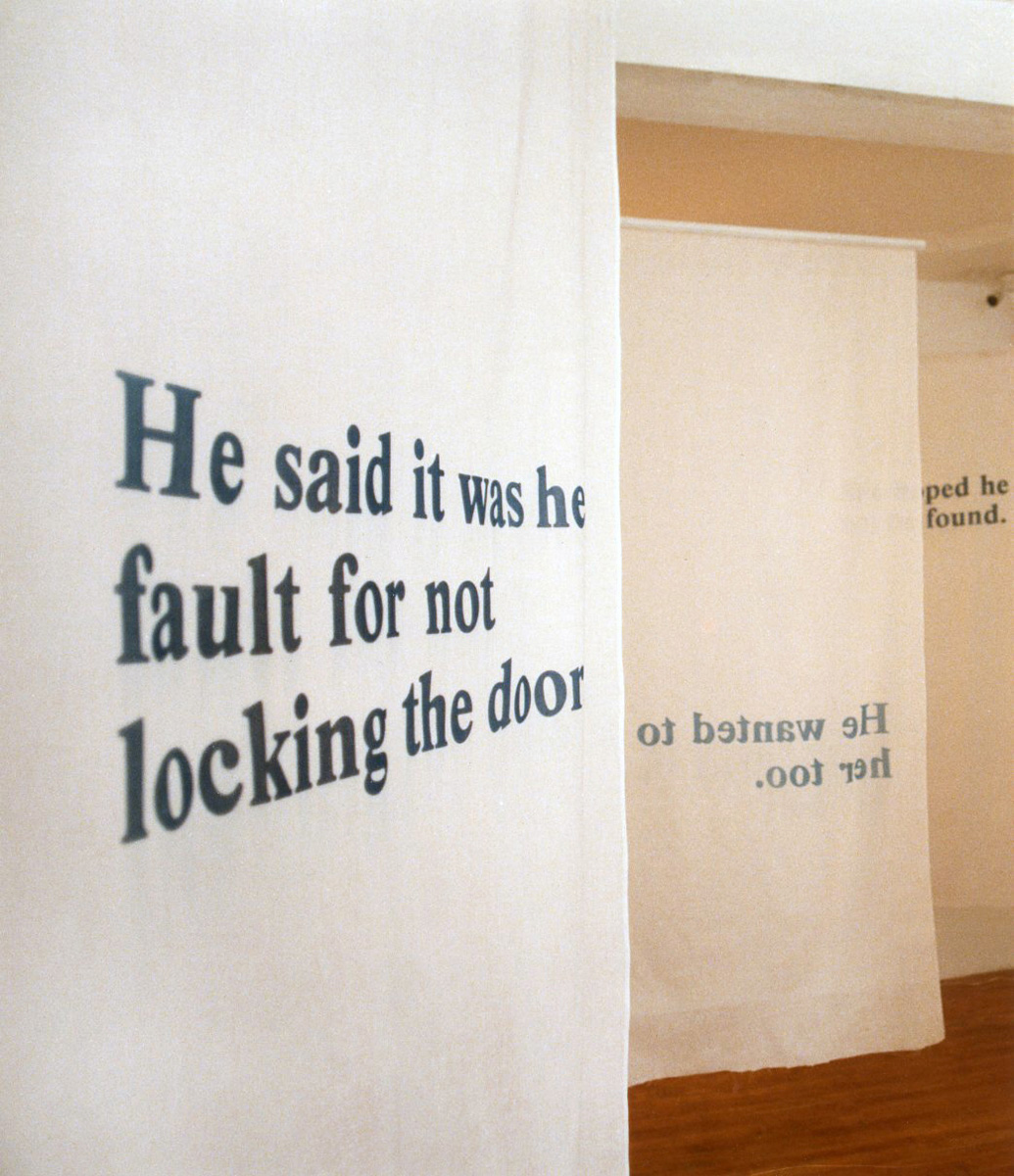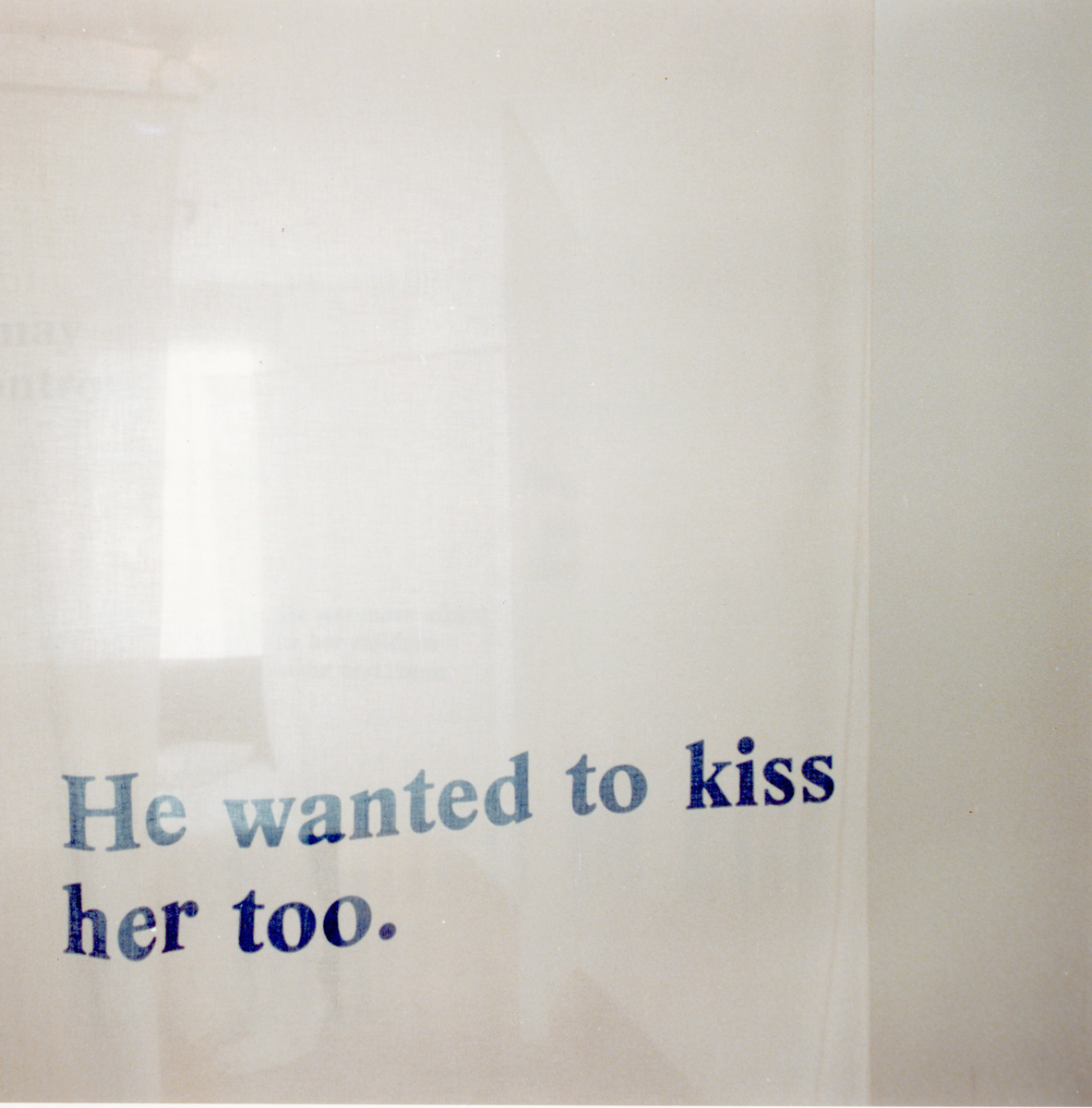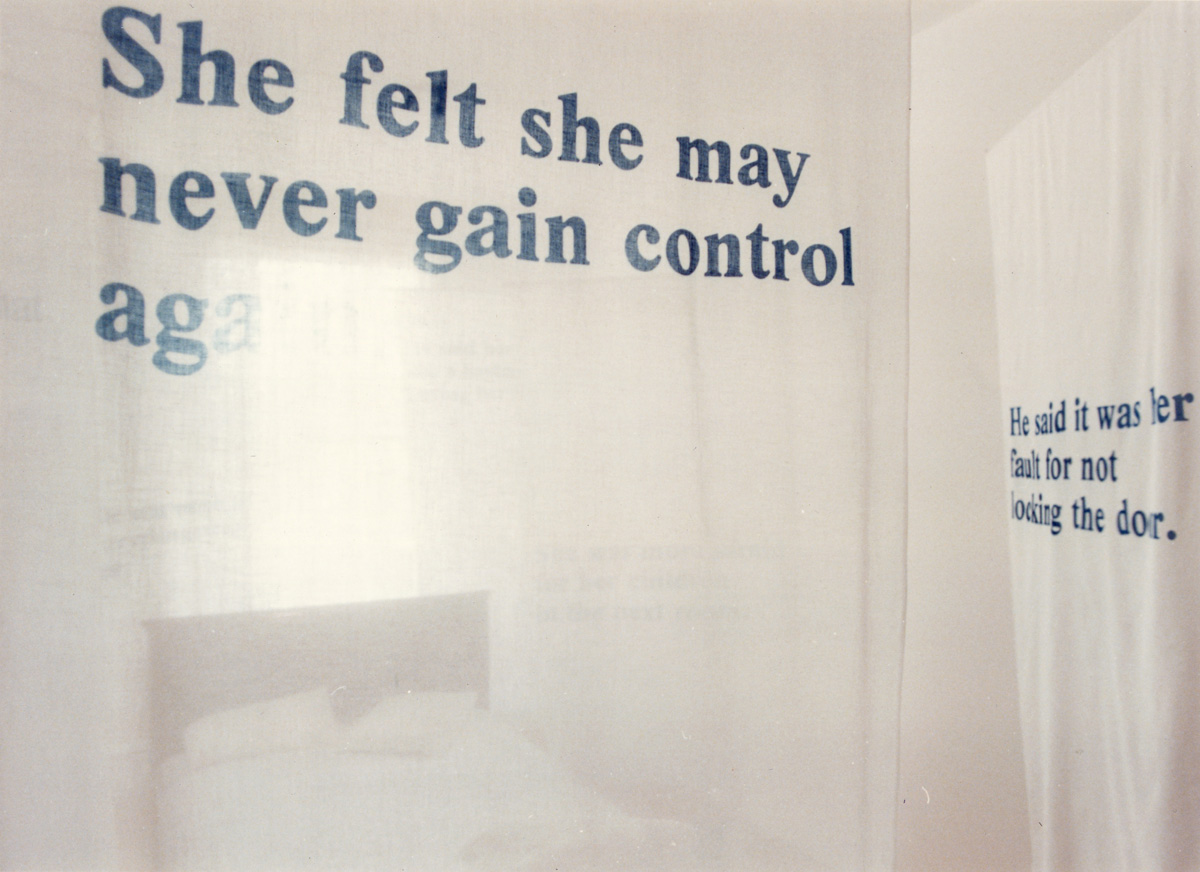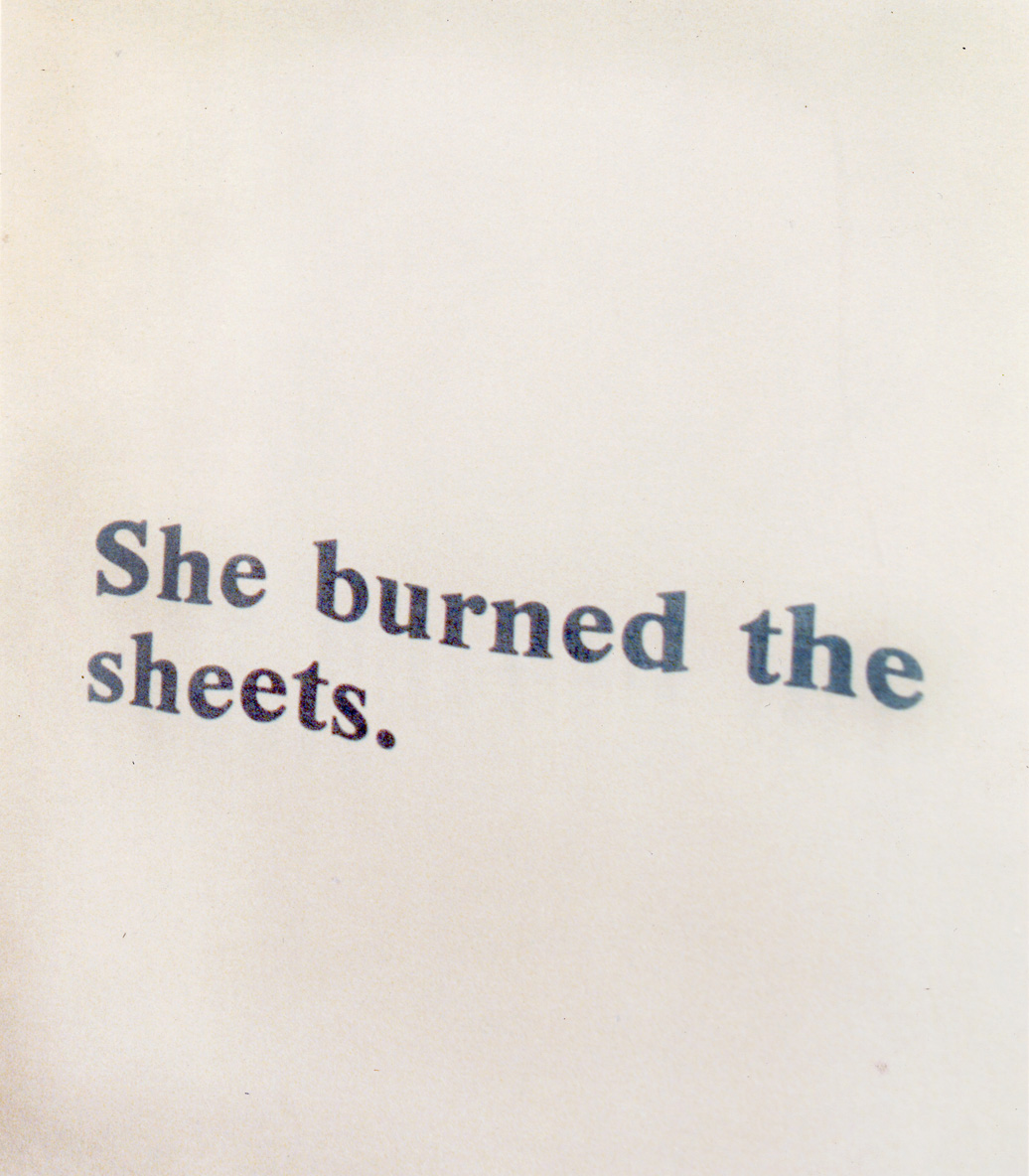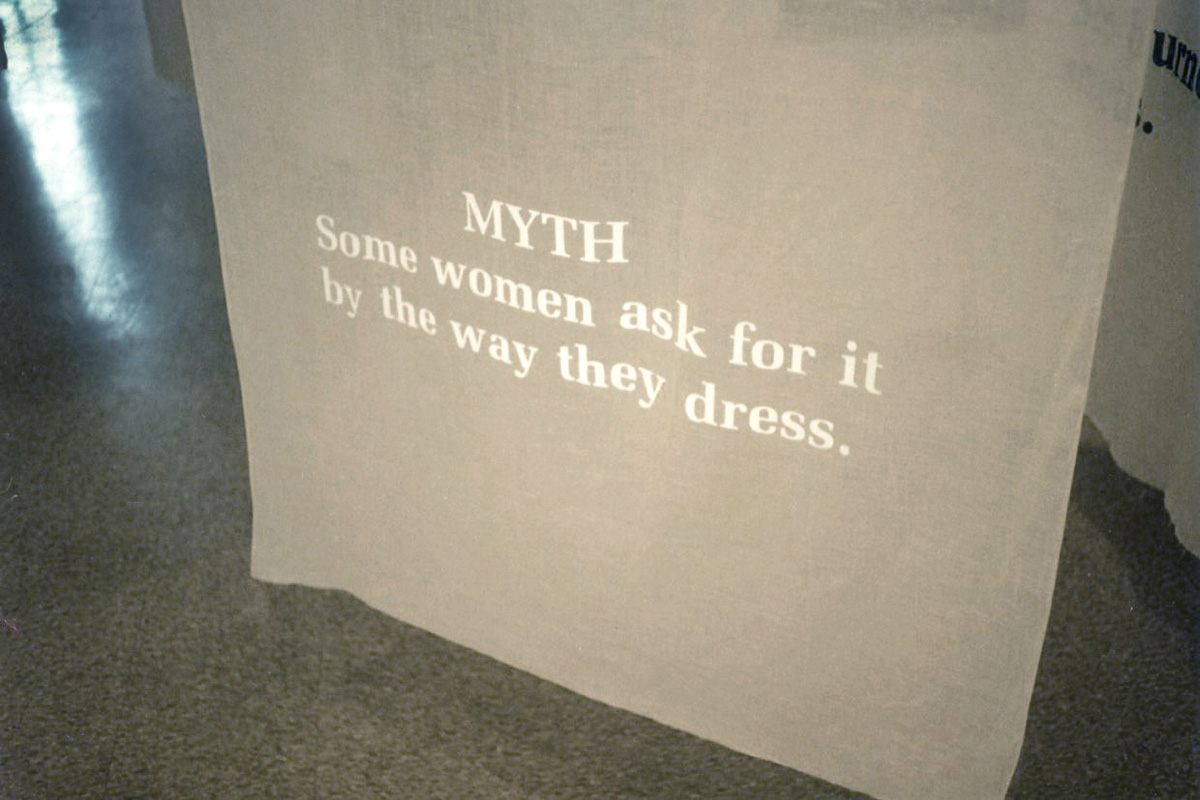Description
In Rape: A Crime Report, 1984, viewers enter a room filled with a maze of sheer cotton organdy panels on which simple declarative sentences are exposed using the cyanotype photographic process. Sentences that begin with “He” or “She” are a distillation of multiple accounts gathered through interviews and research by Fessler, and refer to the psychological state of both the woman and man involved. “He said it was her fault for not locking the door.” “She was more afraid for her children in the next room.” The sentences are printed at varying heights on the semi-transparent fabric, allowing viewers to see through one cloth to the next, but the specific words are hazy, and as viewers move closer to read them and find themselves entangled deeper in the maze.
Viewers eventually find one panel with text written with white light rather than blue, where the sentences are constantly changing. Identified as either myths or facts, the sentences are projected onto the cloth from a hidden projector. They describe both culturally accepted myths about rape, and statistics from the local community where the installation is on view. They expose not only the incidence of rape within a given community, but the lack of political will to address the issue, leaving viewers to ponder which of the two is the crime being referenced in the title.
Information
Rape: A Crime Report, installation by Ann Fessler, 1984
Medium: 11 cotton organdy panels with cyanotype printed text; 1 blank text panel; projected text containing site-specific facts and myths about rape
Documentation includes images from History as Content at Washington Project for the Arts, Washington, DC, 1984 and Rape, Hoyt Sherman Gallery, Ohio State University, Columbus, Ohio, 1985.
Rape: A Crime Report was initially exhibited at Washington Project for the Arts, Washington, DC, in History as Content, curated by Helen Brunner. The installation included two rooms; a living room with a couch and television, and a bedroom with the cloth panels and a bed stripped bare of its sheets. The statistics faded in and out on the TV in the living room. Fessler, a Baltimore resident at the time of the exhibition, chose to feature Baltimore statistics. Later, the installation traveled without furniture, and the statistics were projected onto a cloth panel and updated, when possible, to reflect those of the local community.
In 1985, Rape: A Crime Report was included in the groundbreaking Rape exhibition at the Hoyt Sherman Gallery at Ohio State University. Curated by Stephanie K. Blackwood, the exhibition was dedicated to the memory of Ana Mendieta and included the work of Jerri Allyn, Ida Applebroog, Sue Coe, Nancy Spero, and others. A catalog with essays by Arlene Raven and Susan Caringella-MacDonald accompanied the exhibition as it traveled to sites around the United States under the auspices of Opportunities for the Arts, Inc.
In 2022, Rape: A Crime Report was exhibited at the Wexner Center for the Arts, Columbus, Ohio, as part of the exhibition To Begin, Again: A Prehistory of the Wex, 1968-1989, curated by Daniel Marcus. For this exhibition Fessler created a new projection with updated statistics about rape. The new list of myths and facts about rape emphasized sexual assaults on campus, which have changed little since the 1985 exhibition at Ohio State.


